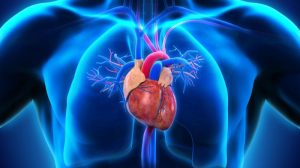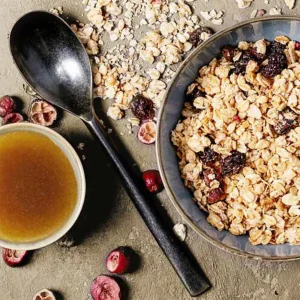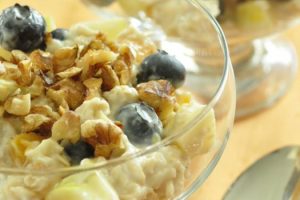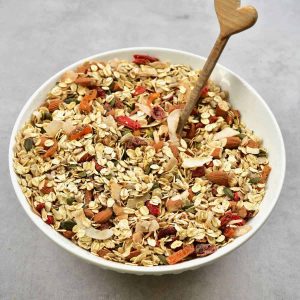
BENEFITS OF MUESLI
Benefits of muesli. It is pronounced Mews-li, is a high-protein and high-fiber breakfast choice. Raw rolled oats are mixed with a variety of delectable and nutrient-dense ingredients to make it. Toasted whole oats, honey, dried fruits, seeds, nuts, and wheat flakes are the components of muesli.
BENEFITS OF MUESLI
Muesli contains iron, sweetened condensed milk, vitamins, magnesium, and other nutrients. Beta-glucan is an oat fiber found in oat bran, which is what makes up muesli. Beta glucan aids with weight loss, blood pressure regulation, cholesterol reduction, constipation relief, and more.
1. It’s Beneficial to Your Heart

Also, beta-glucan is an oat fiber found in oat bran, which is found in muesli. Studies have shown that beta-glucan can lower cholesterol by as much as 10%. Regular consumption of muesli will significantly improve your heart health. Add lemon juice to your concoction as a favor to your heart. Vitamin C supplementation can further improve heart health by lowering cholesterol.
2. You will eat more nutrients
The beneficial elements have more time to be absorbed because muesli can be marinated overnight, much like a steak. It is possible to deactivate any “antinutrients” that obstruct the absorption of minerals or interfere with digestive enzymes. These antinutrients may be affected similarly by cooking, but soaking your food facilitates digestion even more.
3. It is fulfilling

Have you heard of beta-glucan? It can lower cholesterol, but it can do more than that. While beta-glucan is high in fiber, it can also change the texture, look, and thickening power of baked goods like cakes, muffins, pasta, noodles, and muesli. Beta-glucan has been shown in studies to enhance the sensory and gustatory qualities of certain items in addition to their nutritional content and other aspects.
4. You Could Include Protein
And pretty much anything else you desire! While other components like fruit can provide you with a healthy amount of potassium, fiber, vitamin E, C, B-12, and other nutrients, adding nuts to your breakfast can add protein and omega-3 fatty acids. Milk or dairy alternatives like almond milk, flax milk, soymilk, or yogurt that you’ll generally soak your oats in are another method to ingest dairy and protein.
5. You won’t eat anything unhealthy

By making muesli your go-to breakfast, you can avoid eating something that might be high in sugar or fat and harm both your waist and your health. You’ll be making a wise breakfast choice with muesli that will help you throughout the day.
6. Rich in Fibre

Four to seven grams of fiber, which is great for digestion and appetite suppression, can be found in a cup or half of muesli, depending on how much is consumed. Additionally, prebiotic compounds found in muesli help to maintain and regulate digestion by enhancing the activity of beneficial bacteria in the stomach.
Summary
The majority of muesli’s main ingredients are nutritious energy sources that will keep you going throughout the day without feeling exhausted. These include things like dried fruits, nuts, cereals, and wheat flakes. Your immunity is also boosted and you don’t feel exhausted when you eat muesli for breakfast, for example, with milk or yoghurt.